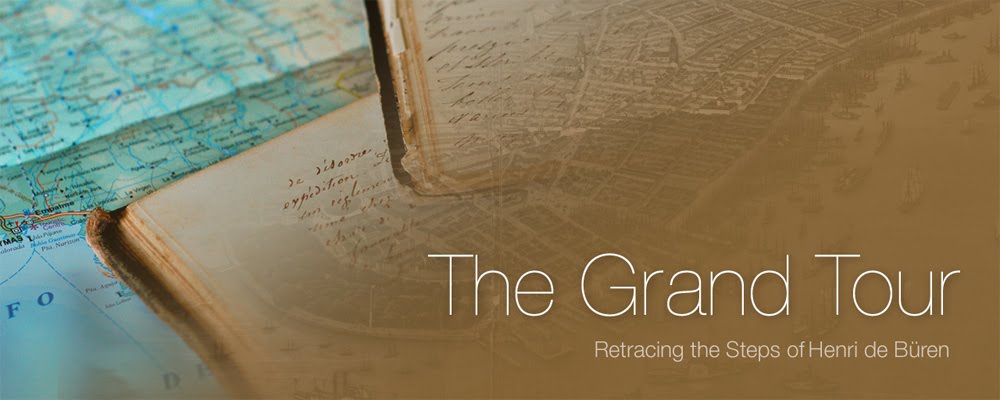As Henri de Büren, explorer, naturalist and artist was making his way down the East Coast, he stopped for a time in Philadelphia. He considered it the most beautiful American city, and while he was there he visited the mint. In a letter home he remarks at how impressed he was by the mint's steam machinery and the speed of its production.
Philadelphia, 1852
"I was able to go to the mint, which is located in another neighborhood, and had a very interesting visit. What is especially remarkable is the beauty of the steam machines, which here replace the old system. They melt a great quantity of gold coming from California, which I saw as it is, picked by the gold diggers, and then melted into ingots with a value of six thousand dollars each. These are then beaten into strips that go through a punch which cuts the coins, and on to another machine which stamps the effigy. Each coin is worth twenty dollars and 80 coins are produced each minute."

Second Philadelphia Mint, built in 1829.

Illustration of the inner workings of the mint from 1852.

The twenty dollar coins that Henri saw being minted.
Historical Information on the $20 coin from the Numismatic Guarantee Corporation
America's largest circulating gold coin was the Double Eagle or $20 piece, born in the exciting years of the great California Gold Rush. The new mines yielded the greatest mass of gold in recorded history. Vast quantities of the yellow metal helped to speed development of the American West and had far-reaching effects on the world's coinage.
The first California gold to reach the Philadelphia Mint was dispatched by the territory's Governor, Col. R.B. Mason to Secretary of War William L. Marcy. Most of this shipment of just over 230 ounces was coined into Quarter Eagles, $2.50 pieces given an incuse stamp CAL over the eagle. This coinage was small, but it soon became obvious that the sheer mass of gold reaching the mints was going to require a much larger denomination than the quarter eagle, half eagle and eagle then authorized. North Carolina Congressman James Iver McKay, a powerful member of the House Ways and Means Committee, had already prepared legislation authorizing the smallest U.S. gold coin, the gold dollar. Acceding to the pressing need to mint gold into larger coin form, McKay was quickly persuaded to amend his bill to include another new gold coin at the opposite end of the spectrum, the Double Eagle or $20 piece. The authorizing statute was passed by Congress on March 3, 1849.








